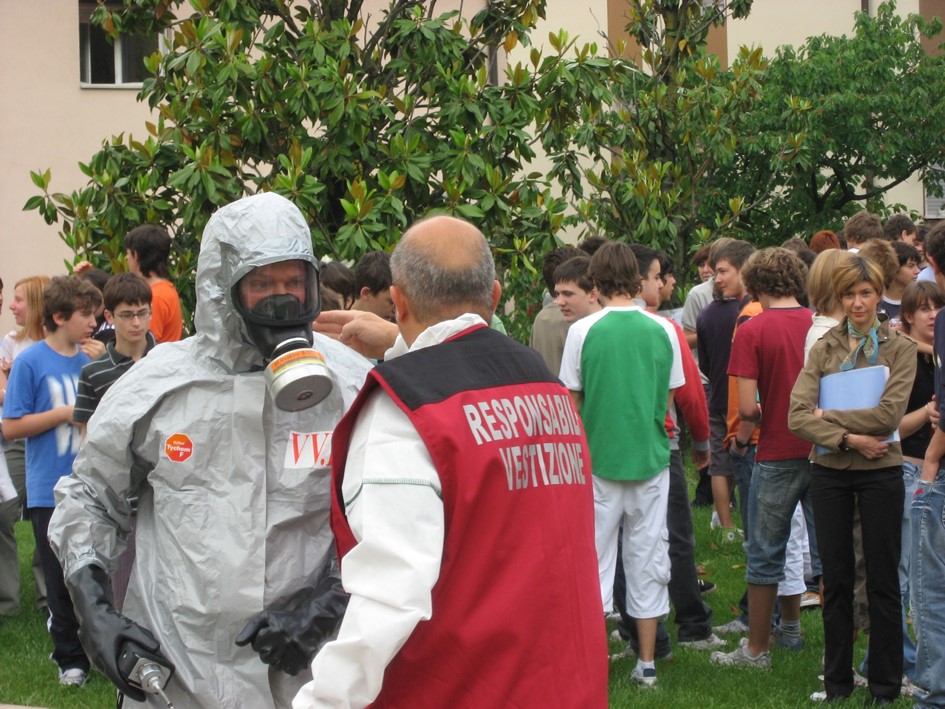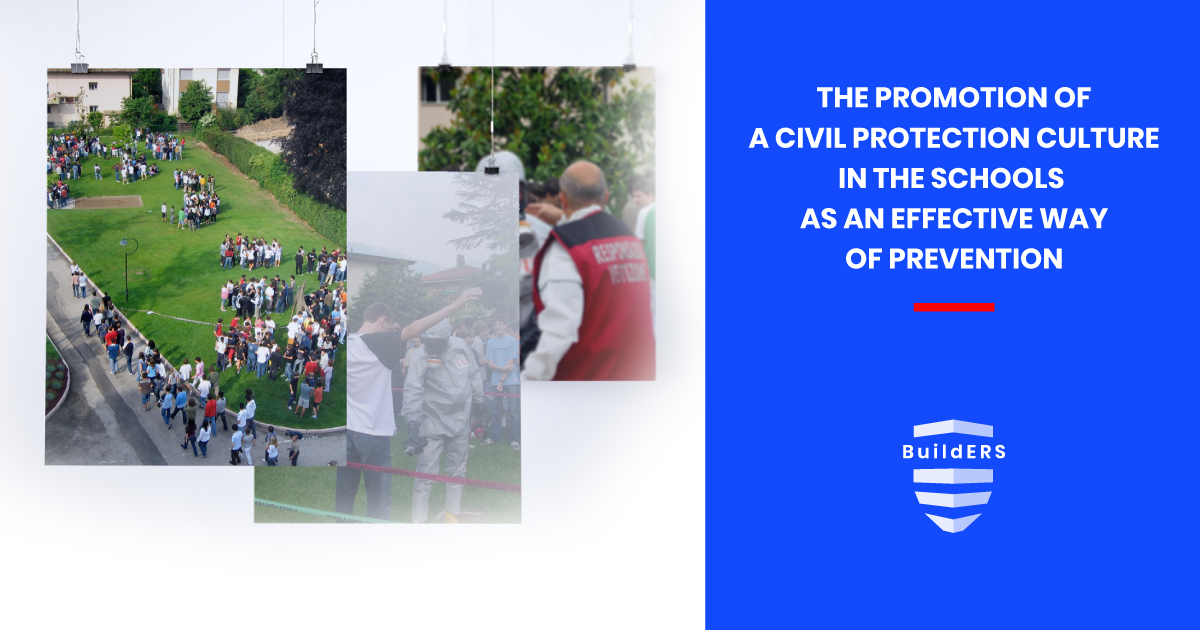In fact, the ideal setting for the diffusion of both culture and the “Civil Protection Consciousness” is the educational structure institutionally appointed to this cause.
The role of schools in the Civil Protection Mechanism
Hence, the necessity and the importance of a convinced and at the same time convincing inclusion into school teaching programmes of curricular educational moments, suited to promote and develop an adequate perception of Civil Protection activities. To begin spreading the Civil Protection culture one has to educate the new generations and raise awareness of the issues related to climate change.

Student exercise on CBRN scenario
In this context, school structure becomes the natural receiver of such a policy as it has the possibility, on one hand, of developing a Civil Protection culture, through the knowledge of habitat phenomena and risks, on the other, the opportunity of promoting correct personal and social behaviour codes through practice and exercises.
It's, therefore, necessary to get to the very heart of the formation and education process of the young people stimulating in all ways (practically as well as theoretically) also their sense of social behaviour, fit to face an emergency and dangerous circumstances. As a result, the benefits will be twofold: firstly, the development of a particular mental attitude capable of reacting to calamities. and secondly, making social commitment attractive, through the visibility of voluntary work.
Which are the most effective means of prevention?
Effective participation will associate students and common citizens, directly involved by the events both actively and passively. In fact, safety knowledge, in general, comes more easily through children who bring this knowledge back from school "at home" to their parents and friends. Therefore, it becomes necessary to extend the educational and informative direction, depicting this aspect in the anticipatory field, by knowledge as the first form of prevention. This implies the establishment of a firm as an active part of the whole process in all the characterizing aspects.
Two main topics, articulated in different subjects, they are necessary to create good knowledge.:
- the first point is concerned about the inclusion of the “Civil Protection” subject in the school education system, thus becoming a necessary and far-reaching effort aimed at collective and social growth;
- the second point refers to “safety” issues through the analysis of the risk assessment and the consequent interventions examined to reduce the risks in question.
At this point, it is clear how the degree of knowledge can make the concept of risk better understood and therefore can reduce it. The above-mentioned subjects tend to produce a sensible reduction of risks (though not totally avoidable) and therefore they clearly focus on being considered efficient means of prevention.
This process towards social growth requires a synergetic, co-ordinated collective effort between the various institutions separately aiming at different targets.
Conclusions
The only possible way of reaching a clear development in this direction is to achieve global persuasion in promoting the right “help us to help you” policy. Today, the role of school exercises that actively involve students seems, to be decisive. They allow to make known the different rescue structures and test emergency plans on predefined scenarios, actively involve "the citizen who grows" and who transfers knowledge in the family environment.

.
Author: Alessandro Galvagni (Civil Protection Department – Autonomous Province of Trento - ITALY)
